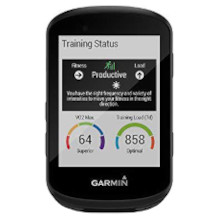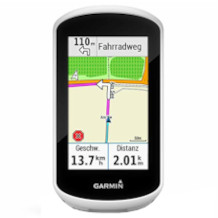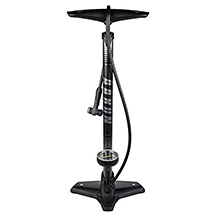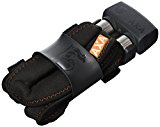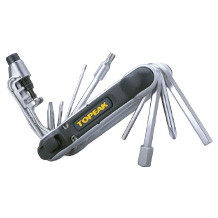Child bike seat purchasing advice: how to choose the right product
- The most important facts in brief
- Child bike seats are an alternative to bike trailers and a great way to take your offspring on your own bike.
- The seats are either attached to the handlebars or behind the saddle. Which option is better depends on the weight of the child.
- Sometimes there are extras that improve comfort – including an adjustable headrest and backrest, padding or a climate control system.
- For optimal safety, the seats have 3-belt or 5-belt systems, depending on the model, as well as footrests that can be adjusted to the size.
- Parents should note that the driving behaviour is influenced by the additional weight and the changed centre of gravity.
Cycling safely through road traffic with your child
The bicycle is a good alternative to the car or public transport in everyday life. There are no petrol or ticket costs, there is no need to search for a parking space and you can get some exercise in the fresh air. Especially when the weather is nice or for short distances, many people choose this way of getting around. To ensure that even small children who have not yet learned to ride a bike can enjoy the ride, there are various child bike seats. These are attached to the handlebars in front of the rider or behind him or her on the luggage rack. This way, children are secured without being too restricted in their freedom of movement. Parents can easily take them on short shopping trips and leisure rides or comfortably take them to and pick them up from daycare.
Another option for taking the child on the bike is the bicycle trailer. This is particularly suitable if the child has outgrown the seat but is not yet able to accompany the parents on the bike. Child seats are only permitted up to a certain weight. If children are too big for standard child seats or exceed the permissible weight, they should gradually learn to ride a bike themselves. Until then, however, the seats offer some advantages over trailers that might help parents make a decision.
What are the advantages of a child seat over a trailer?
Even if the seat is attached close to the handlebars, the manoeuvrability of the bike is not affected. Even manoeuvring in tighter spaces is not a problem because the overall length of the bike does not increase. Since the child seats themselves do not weigh much, parents hardly have to lift more than the child’s weight while riding. This means that even routes with difficult surfaces or large differences in altitude remain comparatively pleasant. During the ride, the children are strapped in with a safety belt, which is why they cannot fall out or fidget excessively. In addition, they are better protected in a seat in the event of a fall or accident. The child seat is cheaper to purchase than a trailer and, thanks to its handy dimensions, can be taken along comfortably on trips or outings.
Such a bicycle seat is therefore very practical for everyday use. It is usually quick and easy to install and takes up less space in the household or car than a trailer. For many parents, it is certainly an argument that the physical proximity to the child is given. However, there are also points that have a negative influence on the driving characteristics. For example, it is more difficult to keep the balance in tight bends. Spontaneous evasive manoeuvres and other quick movements are difficult to manage. On the other hand, the braking behaviour is much more advantageous and safer than if a bicycle trailer with additional weight were to push from behind. This is particularly noticeable on sloping roads. In the case of child seats for the luggage carrier, important space is also lost on which shopping or heavy objects can be transported. However, there are side panniers for the carrier that can be attached together with the child seat.
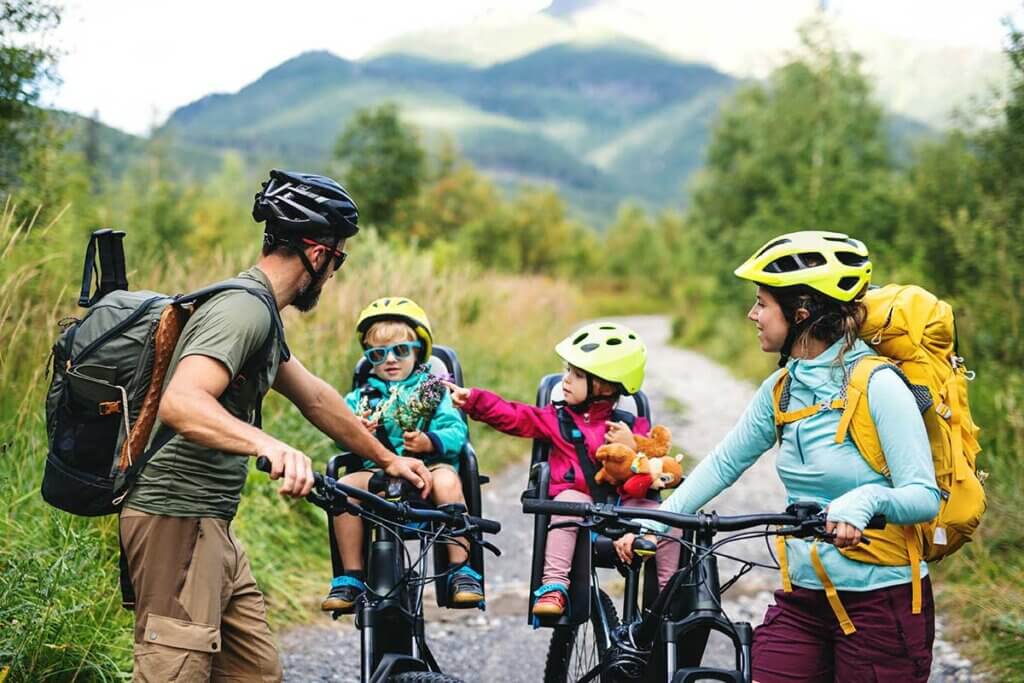
Should my child sit in the front or in the back?
As a general rule, small children should sit in the front, larger children in the back. Front seats that are attached to the handlebars are best suited for smaller children, around nine months old. It is important that the child can sit independently. With this option, parents can always keep an eye on their little ones. Many manufacturers offer the option of a child bike seat with a protective screen to keep the wind out of the child’s eyes. The load capacity of a front seat is around 9 to 15 kilograms. Children weighing between 15 and 22 kilograms must be placed in the back seat. Here they lose the free view in the direction of travel, but are automatically protected from the wind. Also note that the bike’s luggage rack must be designed for a weight of at least 25 kilograms.
Front seat (behind the handlebars)
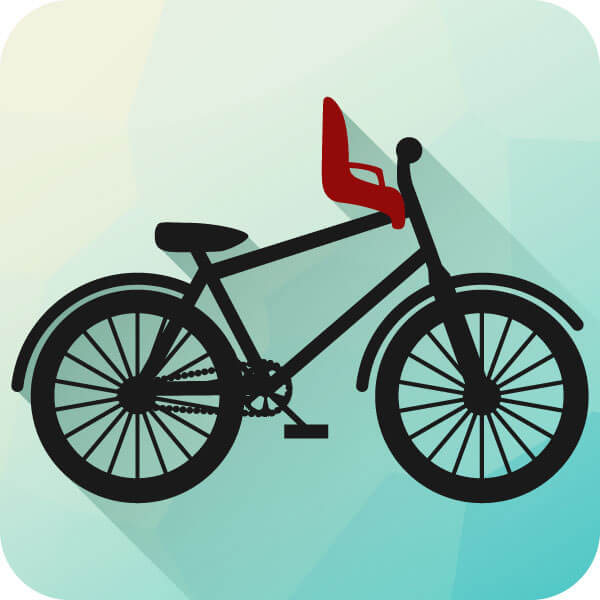
There are two types of front seats. The most common are those that are fitted behind the handlebars, directly in front of the rider. Here, the child sits facing the direction of travel and has an unrestricted forward view. Generally, this is the most comfortable version for the rider, as it has the least influence on the riding behaviour. Only the range of movement of the legs could be somewhat restricted, especially for tall people. In addition, the rider should be careful not to be distracted by the child. For the child, however, this bicycle seat offers comprehensive safety.
Front seat (in front of the handlebar)
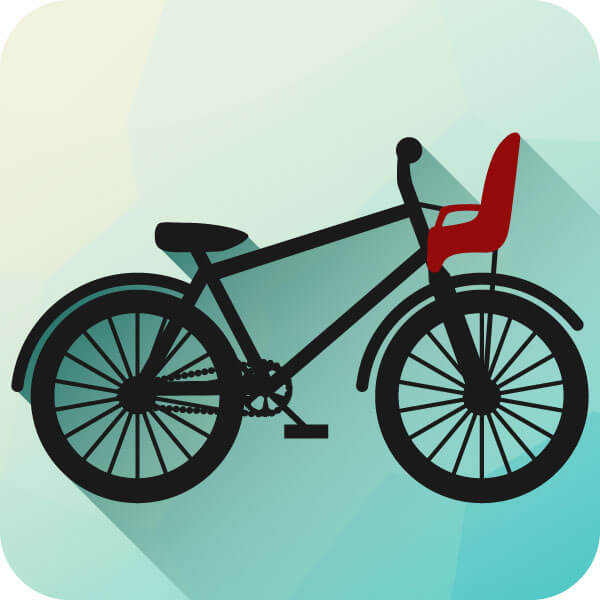
Seats that are installed in front of the handlebars have become rarer. Experts recommend them less because they have a negative influence on safety. The child turns with every steering movement. This has a strong influence on the steering, which can have negative consequences, especially if the child is restless. Both versions of the front seat have a weight limit of 15 kilograms; they are therefore only suitable for small children. In addition to a headrest to lean on, they sometimes have a bar so that the little ones can rest their arms.
Back bicycle seat
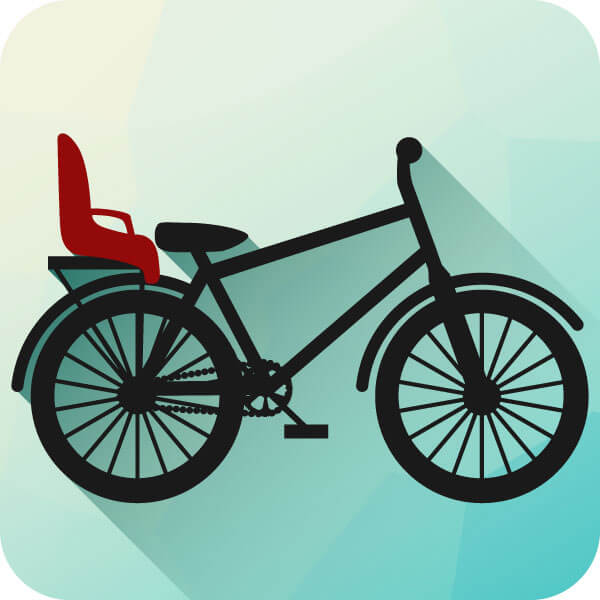
This seat for children weighing up to 22 kilograms is attached to the seat tube and above the luggage rack by means of a bracket with two or more metal bars. The weight is held by the bicycle frame; the result is a higher commuting force in some traffic situations. Especially on bicycles that have a frame with a low step-through, this additional force can cause swaying. Therefore, be prepared for a changed handling of the bike.
The seats have a larger backrest that can be adjusted in height and angle to suit the growing child. The footrests are also adjustable in many cases. These customisation options mean that backrest bike seats are used for longer. It is important that the backrest also has a recess that is adapted to the child’s bicycle helmet, otherwise the child will have to sit with its head tilted. Unlike front seats, there is no risk of falling on the child in the event of a fall.
What features should the seat have?
Seat padding ensures that the child sits comfortably even during a bumpy ride. Make sure that it is easy to change and clean. Back seats in particular should have various adjustable elements. With a variable backrest, the little ones can fall asleep comfortably. Recesses for the helmet ensure that the head remains in a straight position. Adjustable footrests allow even fast-growing kids to stay in the saddle for a long time. Make sure that the bicycle seat meets the requirements: Do you regularly plan to go on longer bike rides? Or will it be used mainly for the ride to and from daycare?
Once the choice has been made on the type of seat, there are a lot of features that can contribute to the decision for a certain model. Since the seats are usually made of very robust plastic, parents should make sure that this material is of high quality. Quality and test seals of the TÜV or the GS mark inform whether it has been manufactured according to European standards. No harmful substances or plasticisers may have been used. In addition, the material must not deform or crack due to external influences such as extreme heat or cold. If you use the child seat regularly or even daily, you should look for a solidly manufactured product.
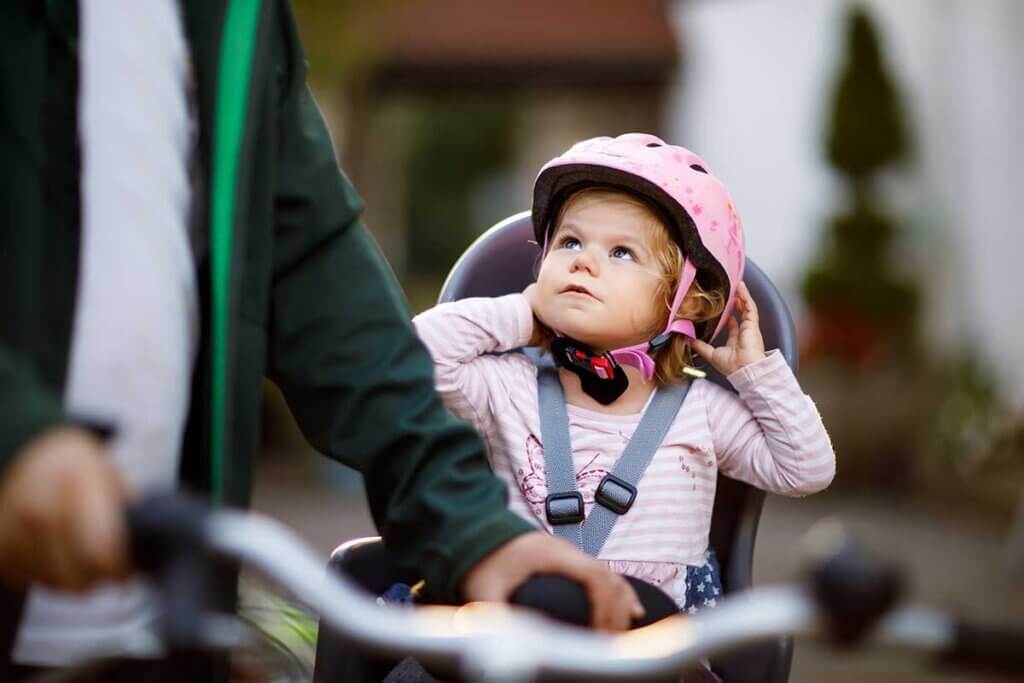
If the surface is bumpy or uncomfortable to ride on, it quickly becomes uncomfortable for the child in the bicycle seat. This can be prevented with seat padding. This does not necessarily have to be particularly thick to be comfortable. What is important is that it does not wear out so quickly and ideally that it is also removable so that it is easier to clean. In addition, to ensure a comfortable position for the child in all positions, the backrest of most back child seats is adjustable in inclination. This allows the little passenger to lean back and sleep comfortably, which is especially practical on longer trips. It is important that parents ensure that the child is optimally secured in this position as well. An additional suspension supports a relaxed posture in some models.
Adjustable individual parts not only ensure comfort, but also that the seat can be adapted to the rapidly growing child. In addition to a variably adjustable backrest, height-adjustable footrests are also important. Some manufacturers also offer the option of adjusting the headrest. However, parents should ensure that the child can sit comfortably even when wearing a helmet. If the seat does not have a separate recess, the child may have to sit uncomfortably and with a tilted head, which can lead to posture problems in the long run. On longer journeys, especially in hot temperatures, the child quickly starts to sweat. Slots and holes in the right places in the backrest serve as a ventilation system. However, practice shows that even the best-rated seat models have problems in this matter, as is also mentioned in the test reports.
How is the child secured in the seat?
Child bike seats have a safety belt to secure the child. A distinction is made between a 3-point and a 5-point safety belt. The harness systems are processed internally and ensure a firm fit during the ride as well as protection in the event of a fall. The support for the feet is connected to the rest of the back child seat in such a way that the children cannot get their feet caught in the spokes during the ride. To ensure greater visibility in road traffic, reflectors are attached to the outside of the backrest. This way, road users approaching from behind can see that there is a cyclist with a child on the road in front of them.
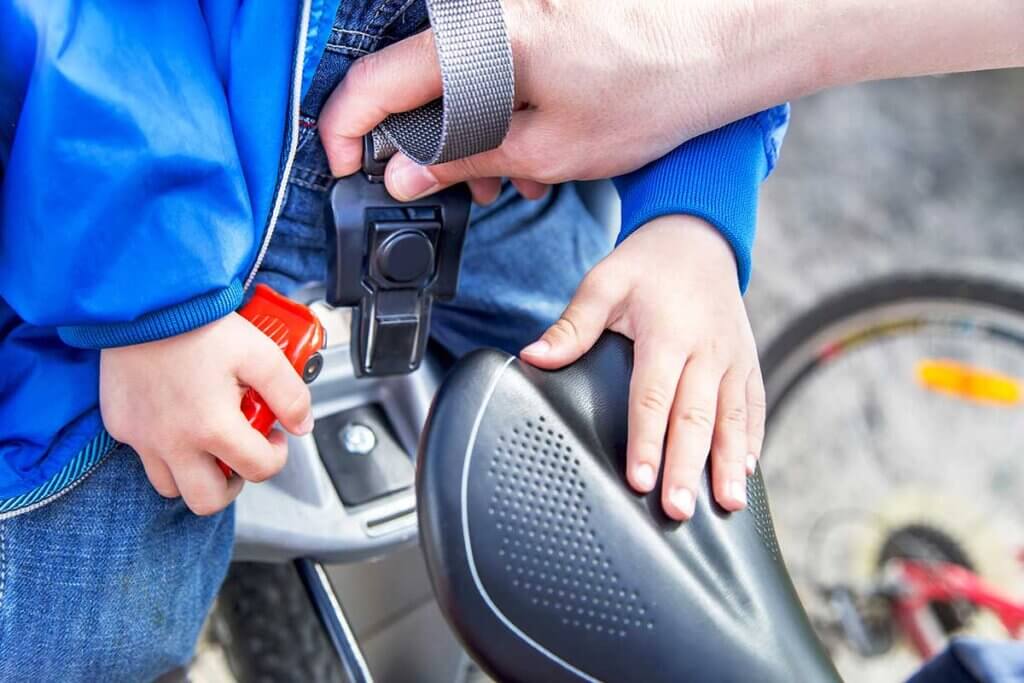
The safety of the child has top priority when touring together on a bicycle. Therefore, care should be taken not only that the child does not sit well, but also that it sits securely. The 3-point harness runs in a Y-shape over the shoulders and between the legs, where it is connected to the seat in each case. With the 5-point system, the child is secured with an additional belt at waist height. Both forms are – if used correctly – absolutely safe for traffic and comply with the standards applicable in Germany. The 5-point harness only provides additional restraint.
Open saddle springs
There are often large metal springs under the rider’s seat. Make sure that your child cannot reach these saddle springs with its hands once it is strapped in. Alternatively, you can cover them with a protector, for example made of rubber.
Behaviour in traffic with a child in the seat
In order to ensure the safest possible ride for parent and child, there are additional important rules to follow, even with a good child seat. For example, a bicycle helmet for children is an essential piece of safety equipment. Even with the best child seat, without a helmet there is a considerable risk of the child sustaining serious head injuries in the event of a fall. Parents should pay particular attention to the correct attachment. The bicycle seat must be firmly attached so that it is impossible for it to open during the ride. The same applies to the straps, which must not be too loose on the child’s body. Make sure that the child cannot undo the belt on its own. It should have a buckle with a child lock or a button that can only be opened with firm pressure.
Drive with foresight and remember that the driving behaviour changes with the additional weight and shifted centre of gravity. If you feel unsafe, do not rush into traffic with the child in the seat. When driving at dusk and in the dark, make sure that you are clearly visible to all road users. If you are responsible not only for your own safety but also for the safety of the child, it is even more important to ride a roadworthy bike. Avoid riding on roads with bumpy surfaces too often to make the ride uncomfortable for your youngster. Also, at the end of the ride, take your child out of the seat before you park the bike. This way you prevent it from possibly tipping over, for example in case it gets restless.
Ergonomics and ease of use
If you have to mount and dismount the seat frequently, you naturally don’t want to have to fiddle around with your bike in numerous complicated ways. Simple assembly is therefore desirable. A front seat must not be so wide that it interferes with steering, and the cables of the brakes and gears must remain free. If you are unsure, it is best to have an expert in the trade show you how to assemble and disassemble the seat and try it out on site. When buying, make sure that the dimensions and weight are suitable for you and the bicycle and that you can still ride it yourself without any problems. The type of bike, on the other hand, hardly plays a role. Whether city bike or mountain bike – child seats can usually be mounted on any type of bike.
Bicycles with a child seat should be equipped with a two-legged bicycle stand to make them more stable. Due to the extra weight, the bike will easily tip over if it is parked on a conventional single-leg bike stand. Some child seats have a separate anti-theft device in case the bike needs to be parked outside. Otherwise, you could secure the seat with an additional bicycle lock. If you are on a bike tour more often, you can certainly use a rain cover that protects the seat and child from the water. There are also replaceable protective covers, some of which are reversible. These are particularly suitable for light-coloured seats where dirt is easily seen, or for dark material that heats up quickly in the sun. Always make sure to buy the accessories that match your model. Each manufacturer has its own products that are not always compatible with seats from other companies.

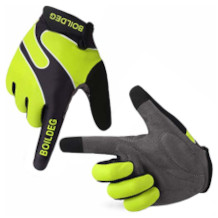

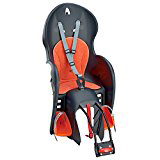

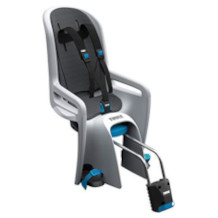
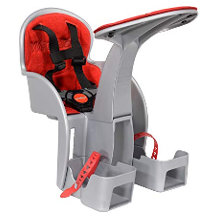
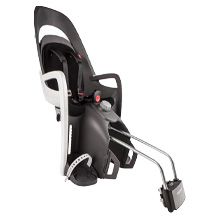
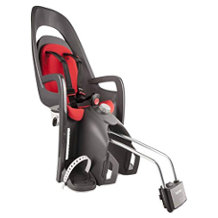
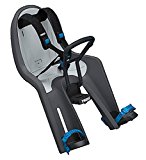
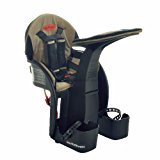
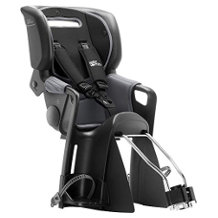

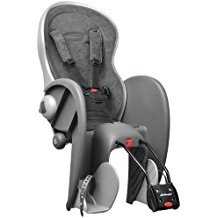
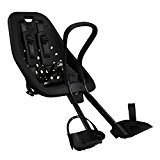
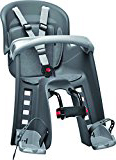
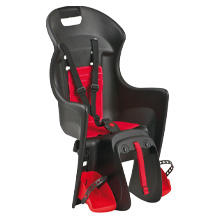
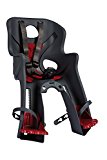
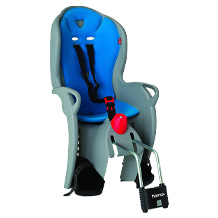
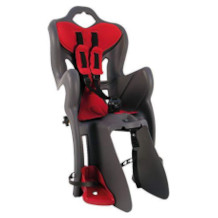
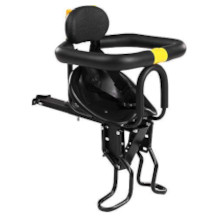

 713 reviews
713 reviews

